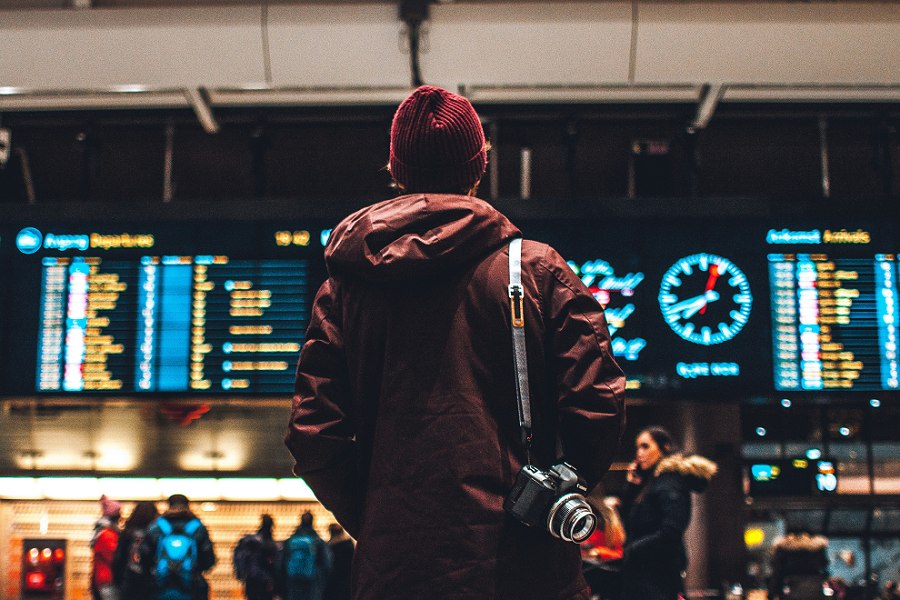100 Million Chinese Projected to Travel Overseas in 2021: How Realistic Is That?

Skift Take
After a sensational National Day Golden Week holiday last October, hopes are mounting that 2021 will see Chinese leisure travelers going overseas as soon as February, making up for the interrupted Lunar New Year holiday they endured this year.
China Outbound Tourism Research Institute, better known as COTRI, even goes as far as forecasting 100 million international trips by mainland Chinese in 2021, sealing China “as the number one international tourism source market again” and well elbowing out the number two, USA, which “will see much lower outbound numbers especially in the first half of 2021,” said COTRI CEO Wolfgang Georg Arlt.
China is the “tallest within a group of dwarfs" in recovery, and the proverbial light at the end of the tunnel “looks very much like a Chinese lantern,” he said.
The forecast is based on compelling evidence of huge pent-up demand, but the more wobbly grounds that the virus is almost defeated in East Asia and vaccines will “hopefully” become available in a few weeks.
At press time, Japan, South Korea, and Hong Kong are all experiencing a resurgence in cases, forcing a postponement of the much-heralded Hong Kong-Singapore travel bubble. Positive vaccine developments in China and elsewhere have provided much cheer, but are widely expected to take some time to be successful.
100 Million, 100 Million!
With Covid-19 virtually wiping out 1.5 billion international tourist arrivals last year, the prospect of 100 million Chinese travelers arriving somewhere overseas in 2021 looks huge and tantalizing.
But as in past years, many will be arriving in the neighborhood. In 2019, of 169 million Chinese outbound travelers, 100 million were to Hong Kong, Macau and Taiwan, 69 million to the rest of the world, according to figures from the National Bureau of Statistics of China.
It's no different from the U.S.. In 2019, of 100 million U.S. citizens traveling overseas, 55 million were to Mexico and Canada, 45 million globally.
COTRI, however, is projecting more Chinese to go farther field in 2021, 60 million, versus 40 million to Hong Kong, Macau and Taiwan, citing “continuing weakness of Hong Kong as a destination.”
At present, Macau is the big winner, with more than 500,000 arrivals from mainland China, said Arlt. Macau is the only destination where Chinese leisure travelers don't have to quarantine for 14 days on return.
“Hong Kong will have to be Covid-19 free before China opens the border. Taiwan is Covid-19 free but there is no incentive for the mainland government to support the Taiwanese tourism industry,” he said.
Outside these destinations, he said there were maximum 20,000 Chinese — doctors, politicians and the like — traveling within the Schengen for official purposes.
“The most likely scenario is opening to neighboring countries for Chinese New Year holiday [February 11 to 17, 2021], and other destinations after Easter [April], based on vaccinations becoming available in mid-December,” said Arlt.
“It will take time to get visa regimes and air connections back on track, that’s why we forecast only 100 million trips in 2021 [compared with 169 million in 2019]. In 2022, however, we are very likely to see a new record number of outbound trips. Many surveys show the eagerness of the Chinese to travel abroad again as soon as it is perceived as safe.”
Travel Memory Deficit
Indeed, a recent survey conducted by Hilton across 20 major cities in China found that Chinese have a “travel memory deficit,” thus a pent-up demand for travel is “bubbling over.”
Travel memories are some of the happiest of their lives, said 85 percent of Chinese respondents. A staggering 91 percent said they felt deprived of the opportunity to create new travel memories they would have otherwise generated through experiences in interacting with different communities, cultures and ideas.
Nine in 10 plan to travel again once restrictions ease and they can travel with peace of mind. Five in 10 said they will travel even more than before.
“Travel is an unstoppable force and we know consumers are eager to reconnect with people and places they love,” said Wendy Huang, senior vice president and commercial director, Hilton Greater China and Mongolia.
But the biggest show of pent-up demand was the seven-day National Day Golden Week holiday in October, which saw 660 million domestic tourists spending 549 billion yuan ($85 billion), 80 percent higher than last year, as demand shifted from overseas travel.
“Our expectations were lower,” said Trip.com Group Chief Marketing Officer Sun Bo.
Golden Week was kind of a “rehearsal” for the upcoming Lunar New Year holiday, a validation of the effects of pandemic prevention and controls, according to Dragon Trail, a company that helps travel players reach Chinese consumers via digital solutions.
It expects a “massive” travel recovery, even when compared to the recent Golden Week.
But would Chinese go beyond Greater China?
“If there's no quarantine on return or any entry bans, and no official advice against outbound travel, I imagine we will start to see some travel returning to Asia, particularly to Southeast Asia and east Asian countries where the virus has been controlled. But due to safety concerns and reduced flight capacity, numbers will still be much lower than in recent years,” said Sienna Parulis-Cook, Dragon Trails associate director of communications.
“Will Chinese travelers go beyond Asia? This again depends on flight availability and perceptions of safety, but the allure of Europe without the normal crowds will surely entice at least a small number of intrepid Chinese,” she said.
Fast and Furious
Currently, all borders between China and Europe remain closed for regular leisure and business travel.
But, according to China outbound travel marketing consultant Oliver Sedlinger, once it starts, it will be fast.
“I've asked some of the large tour operators how soon they can re-boot their operations once the signal is there, and the boldest estimate is three to four months, so I am very hopeful that the recovery will begin some time next year,” he said.
In the Chinese outbound travel industry, operators are getting ready for summer sales to Europe, said Simon Bosshart, director China, Asia-Pacific and Global Accounts of Switzerland Tourism, which has never stopped marketing to Chinese despite the crisis.
“We are positive to see the first border openings [between China and Asia] in as early as spring. And once this happens, things might move quickly,” said Bosshart.
Switzerland wants to be it ready for it.
“Currently, even with a second wave in Europe, we are preparing activities for the ‘sweet spot’ when borders start to reopen and travelers switch into booking mode. It's impossible to identify when this will happen, but we must remain agile to be able to ‘kick off’ when it does,” he said.
The tourism body last week raised awareness of Swiss winter programs with the travel trade and media in Beijing and Shanghai. Earlier in summer, it started“intensifying” communications on the attractions of holidaying in Switzerland post-pandemic.
“Currently, although many figures are being spread [on China outbound recovery], there is no factual evidence to predict the development. What we expect is that the Chinese market can recover pretty quickly, once borders are open,” he said.
Trip.com Group's Bo shares the view. “What we do know is, Chinese love to travel, I think they’d love the chance to go anywhere they could safely visit,” said Bo. “The long-term trend is towards more trips, and more diversity. Domestic travel is experiencing a return to normal [but] we can’t deny that Covid-19 has changed the world, and this story is still ongoing. I really hope the world can come together to beat this thing so by October 2021 the story can then be about the amazing recovery of international travel.”
The 'New' Chinese Traveler
But the greatest chance for international destinations is not in the big number of Chinese travelers but in a reset of their understanding of and relationship with the market.
There are observations that the pandemic has changed the Chinese traveler. A trend seen during the recent Golden Week, for example, was a shift from packaged to free independent travel. Trip.com Group also saw “emerging” vacation ideas such as luxury hotels as destinations, luxury car self-driving, drone aerial photography, gourmet private groups, outdoor hiking, paragliding, hot air ballooning and diving.
Perhaps this coincided with a rise in younger travelers seeking more experiences. Post-1990s and post-2000s generations accounted for more than 60 percent of travelers, said Bo.
“The current sentiment within the Chinese travel industry seems to be that FIT [free independent travel] and tailor-made travel will restart first, while classic group leisure travel will take longest to recover,” said Sedlinger. “There also seems to be a consensus that the whole Covid-19 experience has changed consumption behaviors. Many market players expect that the demand will move towards values such as safety-first, less crowded places, more nature, more health and family-togetherness.”
Competition for 60 million Chinese travelers traveling outside Greater China in 2021 — if COTRI is right — will no doubt be fierce. “The winners will be those who are prepared for the new Chinese visitors, whose preferences have changed through the crisis -- more family, more nature, new places, more experiences, less bling-bling,” said Arlt.
One clear winner is an organization such as COTRI, which has developed a program to help destinations restart their relationship with the Chinese market in a “better and more sustainable way.”




